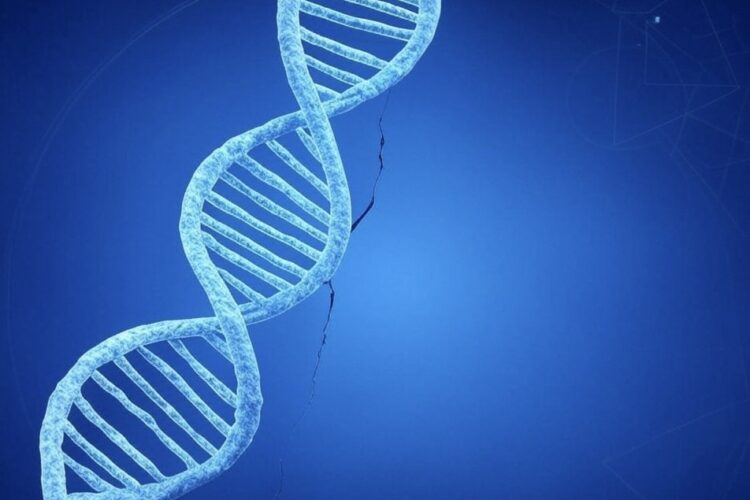In 2017, A Crack in Creation: Gene Editing and the Unthinkable Power to Control Evolution hit bookshelves, authored by Jennifer Doudna, a pioneer in molecular biology, and Samuel Sternberg, her collaborator in the CRISPR revolution. This book isn’t just a scientific memoir—it’s a clarion call to humanity, a deep dive into the biotechnology that’s reshaping genetics, and a meditation on the ethics of wielding such power. At its heart lies CRISPR, shorthand for Clustered Regularly Interspaced Short Palindromic Repeats, a tool derived from a bacterial immune system that’s become synonymous with genome editing. This article unpacks the book’s revelations, the science behind them, and the profound societal implications they herald.
The Science of CRISPR: From Bacteria to Breakthrough
CRISPR’s origin story begins in the unlikeliest of places: the microscopic world of bacteria. These single-celled organisms use CRISPR and its associated enzyme, Cas9, as a defense mechanism against viruses, snipping their DNA with surgical precision. Doudna, a biochemist at UC Berkeley, and her peers—including Sternberg—realized this natural system could be repurposed. By 2012, they’d transformed it into a programmable tool for gene editing, capable of targeting specific DNA sequences in any organism. The result? A technology that’s cheaper, faster, and more precise than anything biotechnology had seen before.
The book meticulously details how CRISPR works. Scientists design a guide RNA to match a target DNA sequence, and Cas9 acts as the molecular scissors, cutting the genome at that exact spot. Cells then repair the cut, either by disabling a gene or inserting new genetic material. This process has unlocked therapeutic applications—think curing genetic diseases like sickle cell anemia or tackling cancer—and opened the door to altering evolution itself. A Crack in Creation doesn’t shy away from the technical: it’s a masterclass in molecular biology, grounded in Doudna’s firsthand account of co-discovering this game-changer.
The Promise of Medicine and Beyond
The medical potential of CRISPR is staggering. By editing somatic cells—those not passed to offspring—researchers are developing treatments for conditions once deemed incurable. Articles often highlight HIV as a target, with CRISPR disabling the virus’s ability to replicate in human cells. Cancer therapies, too, are advancing, as scientists engineer immune cells to better fight tumors. A Crack in Creation paints a vivid picture of a future where genetic diseases bow to biotechnology, a vision Doudna and Sternberg balance with cautious optimism.
But the book’s scope extends beyond medicine. CRISPR’s versatility means it could enhance agriculture (think drought-resistant crops) or even resurrect extinct species. These possibilities thrill scientists and laypeople alike, yet they also amplify the stakes. If humanity can rewrite the genetic code of plants, animals, and itself, what limits should science respect?
The Ethical Frontier: Designer Babies and Germline Editing
Here’s where A Crack in Creation pivots from lab bench to philosophical battleground. Bioethics takes center stage as Doudna grapples with germline editing—altering DNA in embryos, eggs, or sperm, changes that ripple through generations. The specter of “designer babies” looms large: parents selecting traits like intelligence or eye color. While such scenarios remain speculative, they’re no longer science fiction. In 2018, a Chinese scientist used CRISPR to edit human embryos, sparking global outrage and proving the technology’s reach.
Doudna doesn’t dodge these dilemmas. She recounts sleepless nights after realizing CRISPR’s power, questioning whether humanity is ready for it. The book argues for regulation, not prohibition, urging a global conversation on ethics. Patent disputes—like the one between Doudna’s team and MIT’s Feng Zhang—also surface, underscoring how commercial interests complicate the moral landscape. A Crack in Creation insists that science alone can’t dictate the future; society must weigh in.
Societal Implications: A New Evolutionary Era
The subtitle—“The Unthinkable Power to Control Evolution”—isn’t hyperbole. CRISPR could redefine humanity’s trajectory. By editing out harmful mutations, we might extend lifespans or eradicate hereditary diseases. Yet, the flip side is sobering: unequal access could widen social divides, with only the wealthy affording enhancements. Environmental risks, too, abound—what happens if edited organisms disrupt ecosystems?
Doudna and Sternberg don’t offer easy answers, but they demand we ask the questions. Their book bridges the gap between technical journals and public discourse, making genome editing accessible without diluting its complexity. It’s a call to action for policymakers, scientists, and citizens to shape this technology’s path.
The Authors: Voices of Authority and Reflection
Jennifer Doudna’s credentials anchor the narrative. A Nobel laureate (awarded in 2020), she’s a titan in genetics, yet her prose is humble, reflective. Samuel Sternberg, her former student, brings a younger perspective, blending rigor with readability. Together, they humanize the science, sharing the thrill of discovery and the weight of responsibility. Their collaboration mirrors CRISPR itself: precise, innovative, and transformative.
Why It Matters Today
As of March 12, 2025, CRISPR’s footprint has only grown. Clinical trials for sickle cell disease are yielding results, while debates over germline editing intensify. A Crack in Creation remains a touchstone, its insights as relevant now as in 2017. It’s not just a book about biotechnology—it’s a roadmap for navigating the ethical and societal implications of a tool that’s rewriting life itself.
Conclusion: A Crack Worth Mending?
A Crack in Creation is more than a scientific chronicle; it’s a mirror reflecting humanity’s potential and peril. CRISPR, with its Cas9-powered precision, offers a glimpse of a future where genetic diseases vanish and evolution bends to our will. Yet, as Doudna and Sternberg warn, this power demands stewardship. Whether we embrace designer babies or ban germline editing, the choices we make will echo for generations. This book doesn’t just inform—it challenges us to decide what kind of species we want to be.






